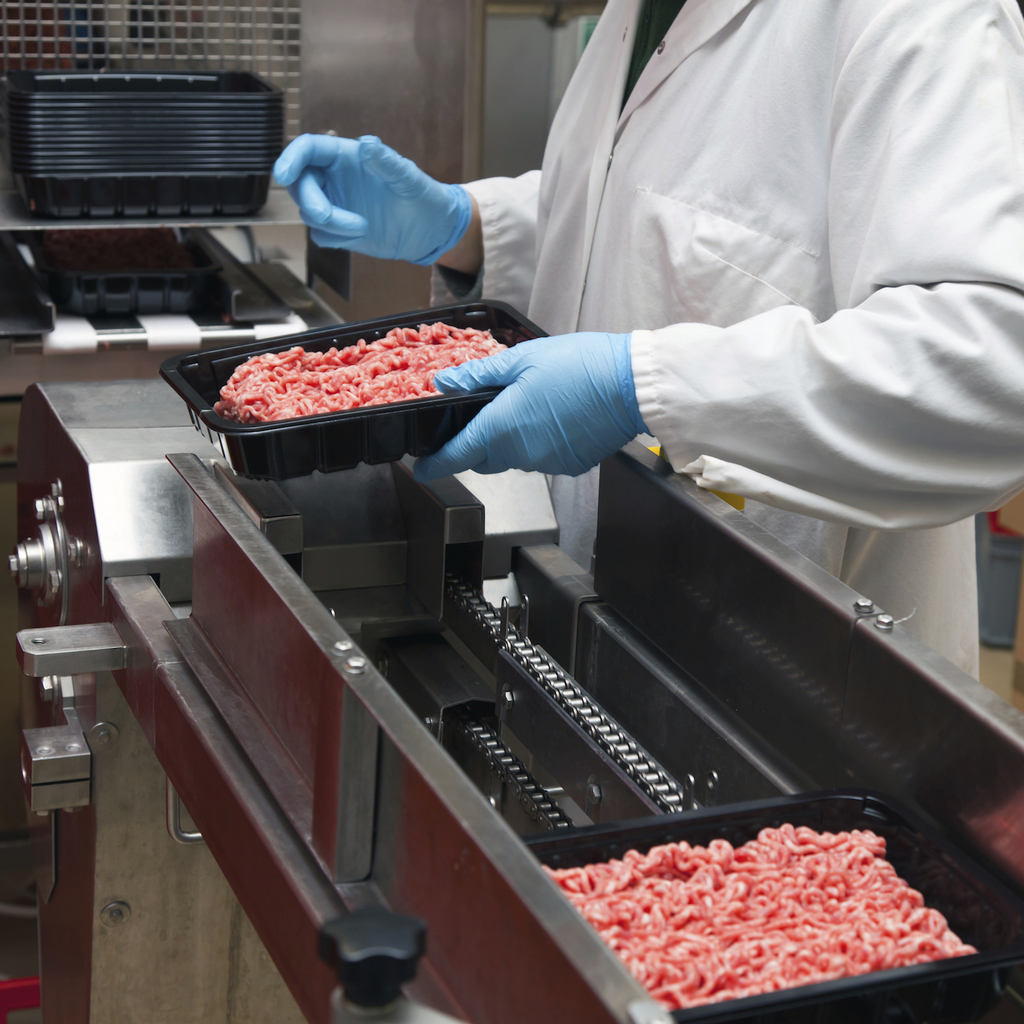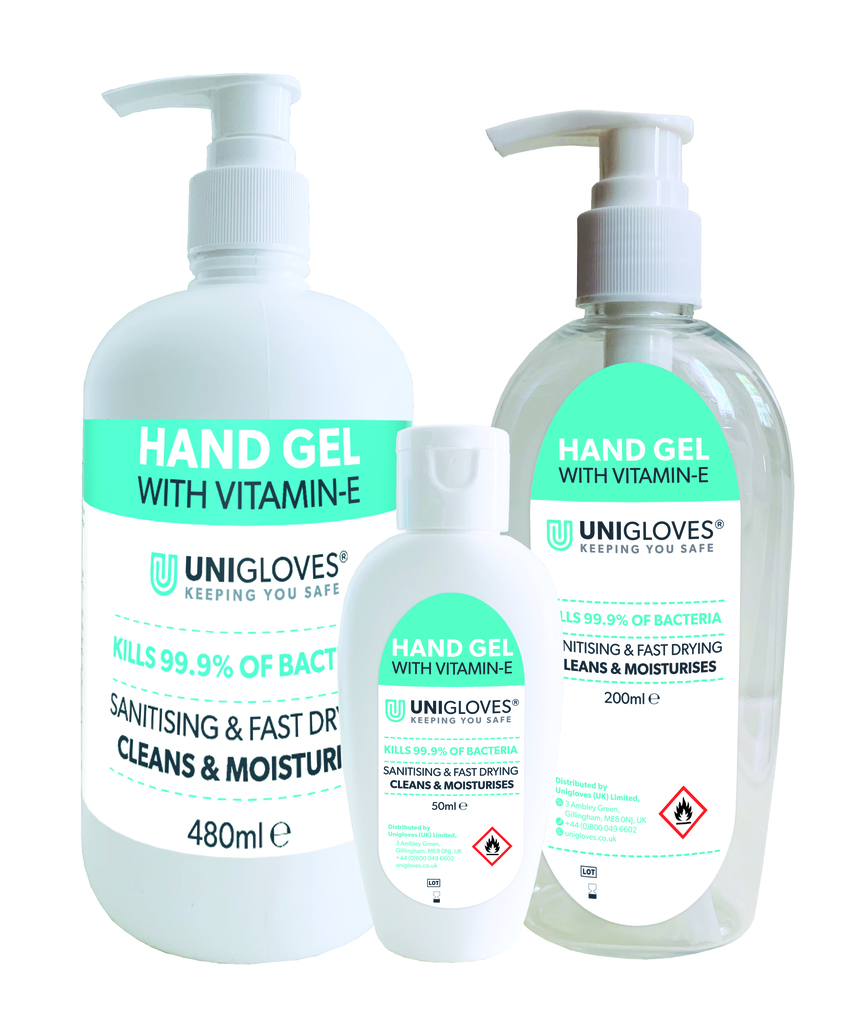
Kelly Rose
Editor

Kelly Rose
Editor
The global COVID-19 pandemic has created significant challenges for safety managers across almost every industry sector. From a hand hygiene and disposable glove perspective, the impact has been felt at both ends of the scale with greater awareness and acceptance on one hand and demand outstripping supply. Here, Donald Gillespie looks at the impact Covid-19 has had.
HOW THE world has changed compared to the one that we lived and worked in some 12 months ago – before the whispers of a possible new virus became the global pandemic that COVID-19 is today.
Little did we think then that the phrase PPE would be trending globally across social media channels, much less be the repeated topic of worldwide news headlines and Government debates as countries scrambled to increase their numbers and levels of PPE required to help in the fight against COVID-19, creating a demand that very quickly outstripped supply.
An article of this nature 12 months ago would have looked significantly different focusing on the traditional challenges of trying to encourage a greater number of employees to adhere to established hand hygiene and hand protection protocols.
But today, understanding the importance of preventing cross-contamination – in almost every work and social setting - has never been higher. And we are not just talking about the obvious high risk sectors where reducing viral spread is absolutely vital to help safeguard health such as the medical, healthcare, care home and food sectors.
The global understanding of the role that hands have in their ability to spread the virus – and just as importantly in helping prevent the spread of the virus – is highly recognised and understood.
The importance of keeping our hands clean and sanitised has now become part of our everyday professional and social lives – as studies conducted during Coronavirus have highlighted.
In one healthcare study of hand hygiene performance rates in a hospital setting, between January 2019 and January 2020, the average compliance rate ranged from 35% to 71% and was mostly unchanged since March 2019. From January to April 2020, the all-hospital average compliance rate increased from 46% to 89%1.
In another study of 2,000 UK adults2, figures show the average adult is now washing and sanitising their hands more regularly than before the outbreak.
The study found that before the call to increase hand-washing, 45 per cent admitted to coughing and not washing their hands afterwards. Another three in 10 would sneeze into their hand without sanitising after, whilst a quarter said they wouldn't wash their hands before preparing food prior to the pandemic.
As a result of the impact that COVID-19 has had, however, 83 per cent said they now always wash their hands after coughing, and 85 per cent after sneezing.
Some 78 per cent more people are now washing their hands compared to twelve months ago, whilst half of those polled are also using antibacterial hand gel more now than they did before the COVID-19 outbreak.
Change in attitude
This research confirms what we see anecdotally on a day to day basis – that there is a significantly increased acceptance and understanding of hand hygiene and the role it has to play in preventing viral and bacterial transfer.
This has also extended to the increased use of single use gloves across a wide range of industry sectors
With this growing acceptance comes an opportunity to revisit in house strategies and opportunities to reinforce the significance of hand hygiene by workers, visitors and customers alike through convenient access to effective hand hygiene solutions.
Supporting this change in attitude requires:
Access to well supplied washroom hygiene facilities
Access to effective hand sanitisers at the point at which they are needed (in washroom environments and critically across wider areas of the business where need has been identified in line with traffic and work flows
Supplying moisturising pre-work and after-work creams
Clear protocols in place supplemented by staff training on required hand washing and hand sanitising
Reinforcing these COVID-19 approaches today can help create a positive hand hygiene legacy for tomorrow.
Increased demand brings increased challenges
While increased awareness and adoption of hand hygiene procedures and attitudes towards the use of PPE are always welcomed, this,has brought challenges to safety managers looking to equip staff with practical solutions in light of two critical issues:
Increased risk of non-certified products entering the market
PPE demand outstripping supply
On April 27 this year, Food and Drug Administration officials in the US announced there were 1,500 additional manufacturers of hand sanitiser registered with the agency.
In that same announcement, agency officials said they were trying to address safety concerns with products possibly not in line with FDA guidelines, or those being marketed with unproven claims – a situation that has been reflected here in the UK.
Looking at the significant growth in use and demand for hand sanitisers, this should serve as a reminder of key quality thresholds you need to be looking for when selecting an effective workplace hand sanitiser solution.
Sanitiser performance requirements
Ensure a minimum 60% active ingredient content. The Unigloves hand sanitiser contains 70% active ingredient with added Vitamin E to ensure effectiveness to kill 99.9% of all bacteria. A hand sanitiser requires at least 60% active ingredient to be effective in killing 'virus' and bacteria
If you are looking for an effective sanitiser to use in high use environments such as healthcare and food handling/manufacturing, ensure it contains a moisturising agent to help replenish the skin’s natural oils
Ensure the selected sanitiser is fast-drying which will aid alcohol absorption into the skin while leaving the hands feeling soft and smooth
Aside from fixed washroom sanitiser stations, ensure you are providing sanitiser in multi-size pump dispensers for use in all aspects of the workplace and most importantly at the point at which needed. The Unigloves hand ssanitisers are available in 480ml and 200ml pump dispenser and 50ml flip top sizes.
Demand outstripping supply
Since the COVID-19 outbreak in early 2020, demand for disposable gloves has accelerated significantly with market participants in some countries reporting order increases of up to 500% between January and July 2020 as importers and end-users, including governments, have tried to meet additional demand and replenish pandemic buffer stocks.
While growth in demand has been highest in Europe in Germany and Spain, demand from the UK has increased 400% post-COVID, driven by huge increases in demand in the medical and care sectors, but also in food preparation and industrial sectors which have increased their focus on hygiene.
As winter approaches and COVID-19 cases are again on the rise, we expect the demand for disposable gloves to continue to outstrip supply for some time. Although many glove producers, including Unigloves' parent company, UG Healthcare, are working hard to increase production capacity, constraints on the supply of raw materials are likely to restrict growth.
While factories are working hard to increase their total manufacturing capacity, lead times for new production lines are no less than 12-18 months.They are also impacted by a range of factors including the availability of raw materials, workers and utilities.
In the interim, many manufacturers have been able to increase aggregate utilisation levels (from an average of around 85% in 2019 to around 95% in 2020), to drive annual capacity up from 300 billion gloves per year in 2019 to around 320 billion gloves per year in 2020.
Even with this additional capacity, demand continues to exceed available supply, and the situation has been further complicated by shortages of nitrile butadiene rubber. Expansion for production of this raw material requires a longer lead-time of two to three years, with higher capital expenditure.
The nitrile situation has caused a knock-on effect to other glove raw materials including latex and vinyl, meaning costs remaining high on all polymers for the foreseeable future.
Beware false claims
Given the demands for PPE products as a result of the COVID outbreak, multi-UK safety organisations including the BSIF, BSI and HSE have warned about the increase in PPE being offered to the market with false certification and performance claims3
For anyone with responsibility for sourcing hand protection, ensure that any products sourced meet required standards.
In terms of disposable gloves, ensure any selected meet the following:
Guide to EN Standards for gloves
EN420 – Protective glove general requirements
|
EN455-1 EN455-2 EN455-3 EN455-4 |
Freedom from holes Physical properties Biological evaluation Shelf life determination |
EN 374-2; tests for any defects in the glove such as holes and seams using a water leak and an air inflation tests.
EN 16523-1 (formerly EN374-3); tests for permeation of chemicals through the glove by totally immersing it in the chemical.
EN374-4; tests for loss of strength in the glove when exposed to a chemical
AQL 1.5 – meets medical standards for pinholes
Conclusion
The outbreak of COVID-19 has changed the world. And when it comes to hand hygiene and hand protection, it has created both opportunities and challenges for safety managers responsible for maintaining workplace health.
What is essential is to ensure that where hand hygiene and hand protection is concerned, solutions are supplied that meet the needs and safety standards required.
References
1 - https://www.clinicalmicrobiologyandinfection.com/article/S1198-743X(20)30339-6/pdf
3 - https://www.bsigroup.com/en-GB/about-bsi/media-centre/press-releases/2020/february/warning-fake-certificate-for-medical-face-masks/
Donald Gillespie is marketing director at Unigloves. For more information, visit www.unigloves.co.uk



3 Ambley Green
Gillingham Business Park
Gillingham
ME8 0NJ
UNITED KINGDOM
0800 049 6602